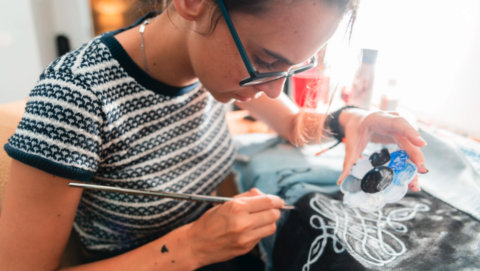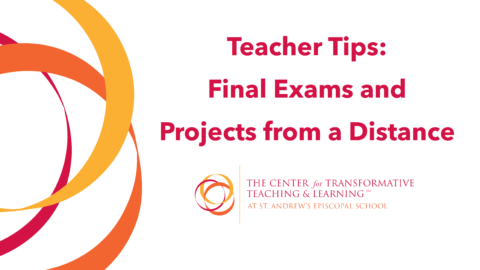What can I do with my child right now? There is such a huge focus on apps and online resources to keep the learning moving forward. And this is fine. But here is one powerful learning activity you can do with material that your child already has, with no further instructions from a teacher. And it doesn’t have to involve a screen.
Learning involves making all that content and all those skills covered during the year stick in the brain. Research tells us that leaving this to the last few weeks of school is not a good way to build durable memories. Now is a great time to help make it stick, and your child already has what they need to begin doing that in their backpack. We will tell you how after these two stories:
Two stories
Bill does every homework assignment, and it is ready, out on the desk, when the teacher walks in the room — it is his “thing” as a student. Tests are hard, he gets through, but final exams are the worst. He gets his highlighter pens out with two weeks to go, reads and rereads his notes and the book until they are glowing in five fluorescent colors. But the exams are still really hard.
Andrea has a different attitude to homework. It kinda gets done. As the exam date approaches, she leaves her studying to the final hours and then crams like crazy. She does fine on exams, but if you asked her a question a week later she would shrug and look blank — it is as though the year’s knowledge just evaporated after the exam.
Do any parts of those stories sound familiar? Research tells us that rereading, highlighting and cramming are low quality techniques. Building durable knowledge needs three main strategies. We will first tell you what they are, then give you a game plan so you can use them with your child at home:
Three strategies for learning
1) Retrieval practice — Choose a topic and try getting the important concepts and skills out of your brain and onto a piece of paper, or explained out loud to somebody else. Even if it is hard, you must try. And even if you fail to retrieve anything at all from your brain, the act of trying builds bits of velcro in your brain, figuratively, that help make it stick when you check your answers against your notes or the textbook.
2) Spaced practice — Allow some time to begin to forget between study sessions on the same topic. It will feel worse, but the struggle to fight through the rustiness will help make it stick better.
3) Formative assessment — Give yourself a short quiz, and use what you know and don’t know to help you plan your future studying. What do you know well already that you can back off from for a while? What needs extra studying? Creating a study plan is good, but constantly adjust it based on what you learn from formative assessment.
So what can I do?
In all these steps, try to get your child to work as independently as possible, but offer help and scaffolding where needed — you know your child.
1. Have your child select a subject. Start with something they like (but ultimately do this for all subjects). Find the tests, major quizzes and papers from 2020.
2. Have your child go through and highlight the test questions that are major ideas. They should ask themselves the question, What would my teacher really want me to still know a year from now? Highlight these.
3. Make a list of these questions in a separate document. Include headings for each section.
4. Select all, then copy and paste underneath with the title “my questions.” In this version, have your child change the questions into something a bit different. The same idea or skill is being tested, but the question being asked is a new one.
5. Either you or your child can use this document to make short retrieval practice “quizzes.”
6. Try the questions, then use past tests, your notes, your textbook, or online resources (in that order!) to check the answers. If possible, contact your teacher if you are still unsure.
7. Do spaced practice — allow several days between studying the same topics. The goal is to get a bit rusty between sessions so that recall is hard. Getting things wrong here is okay! Getting things wrong now is the point — this is how we build learning that will last.
8. At the start, do not mix topics up so that you can master individual units. Over time, as you get better, mix up topics more and more. Distinguishing between different topics is hard, but doing so helps make it stick.
9. Use these quizzes as formative assessments that give you insight into how to adjust your studying moving forward. What needs more practice? What needs less?
10. Go back and color code your list of important ideas (eg. green dot—I know it well; yellow—I’m okay, but am still working on mastering it; red dot—I really need to study this more).
Ideally your teacher could help provide you with resources that make steps 1-5 redundant. But if they are unable to, you and your child can still create a quality study strategy to help make it stick.
Yes, we should still be learning new things, and that is a topic for another article. But in the push to cover new ground, do not forget that true “learning” means forming durable memories — knowledge and skills that last well beyond the end of a course. Making what your child has already covered this year stick in their brain is a great place to start your distance learning plan.




